
“In Industry 4.0, lasers provide a connection between the virtual and real world”
source:
keywords:
Time:2017-07-12

As scientific and technical director of Hanover’s Laser Center (LZH), Prof. Ludger Overmeyer works at the interface between research and industry. In our interview, he talks about trends in laser material processing, potential still to be exploited in process optimization, and his expectations for the conference LiM—Lasers in Manufacturing, which he will be leading from June 25 to 29, 2017, as part of the World of Photonics Congress.
Prof. Overmeyer, as conference manager of LiM 2017, what highlights do you expect?
Prof. Ludger Overmeyer: We have a very wide range of presentations this year by the most prestigious experts from Asia, the U.S., Canada and various European countries. Together, the presentations cover the entire spectrum of modern laser applications, from micro and macro processing to additive processes for metals, plastics and even biological tissue. Prof. Paulo J. Bartolo from Portugal will be giving a keynote presentation on tissue engineering in regenerative medicine. For the first time at LiM, we had significantly more presentation offers than we could accommodate. We eventually used a review procedure to select around 200, which promise to be of a very high standard.
What are currently the most exciting fields of innovation in the use of lasers in manufacturing and material processing?
Overmeyer: That has to be additive production. Completely new applications are emerging in this field, and we don’t yet know where some of them will lead us. I’m thinking of micro-3D printing of polymer structures with resolutions of around 100 nanometers. Here we are operating below the wavelength of light. We are still looking for suitable applications for this, such as three-dimensional chips or optical processors. Hybrid processes for manufacturing highly complex metal structures are also an interesting area. Lasers can be combined with other processes to greatly increase the productivity and cost advantages of industrial production processes. In particular, combining laser deposit welding with conventional welding processes and machining enables even large components to be created quickly and economically. This will be an important addition to powder bed processes.
What role can laser technology play in the connected process world of Industry 4.0?
Overmeyer: A laser is a massless, fast and wear-free tool. In many situations it eliminates the need to construct physical tools—thus creating a direct link between the virtual model and actual production. We can use laser processing methods to develop ideas, design them and implement them directly. This offers huge advantages within the process chain. As a result, the time from idea to product is reduced by weeks and months—and even after production has started, product improvements can be implemented more easily where there is no need to make tools.
Development is not standing still, even in mature fields of application such as laser processing of glass or sheet metal. How much potential is there in optimizing laser processes?
Overmeyer: We are learning more all the time and can adjust process parameters ever more precisely to the specific properties of the material. In the case of glass, for instance, the edges of borings and cuts are becoming smoother thanks to ever more precise control of ultra-brief laser pulses and almost tension-free processing; we can now even weld and separate glass in cases where this had long been impossible. And that’s only one area. We are far from exhausting possible developments in laser processes. One very exciting field, in which the laser serves as an enabler, is what are known as “tailored bulks”. This involves connecting disparate materials before shaping them. Previously, for example, to build components from steel and aluminum, the separate parts would first be shaped and then joined together. In the case of tailored bulks, we use lasers to join them together and shape them afterwards ...
... what is the advantage of that?
Overmeyer: Some process steps can be dispensed with. If we use a laser deposit welding process to pre-coat a component and then immediately give it its finished shape, we no longer need to process the individual welded pieces. This saves time and money, and enables us to construct completely new components. At the Hanover Laser Center (LZH) we are involved in a special research area dealing with this. Presentations will be given on this at LiM in Munich, from June 25 to 29, 2017.
That’s a good cue. What will the LZH be focusing on at the LASER World of PHOTONICS?
Overmeyer: One main topic will be additive production, from macro to nano processing. We will also be focusing on laser processes in underwater technology. These range from laser cutting of steel bulkheads to spectroscopic detection of mineral deposits in deep waters. And, appropriately, this year we will also be discussing lightweight construction and examining applications in shipbuilding and yacht building. Alongside everything else, we will also be focusing on optical components and customized optics—from fibers to laser systems. Last but not least, we will be demonstrating the potential of imaging techniques and image analysis for monitoring manufacturing processes.
- RoboSense is to Produce the First Chinese Multi-beam LiDAR
- China is to Accelerate the Development of Laser Hardening Application
- Han’s Laser Buys Canadian Fiber Specialist CorActive
- SPI Lasers continues it expansion in China, appointing a dedicated Sales Director
- Laser Coating Removal Robot for Aircraft
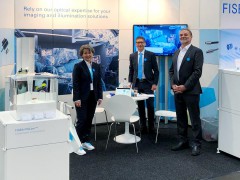 FISBA exhibits Customized Solutions for Minimally Invasive Medical Endoscopic Devices at COMPAMED in
FISBA exhibits Customized Solutions for Minimally Invasive Medical Endoscopic Devices at COMPAMED in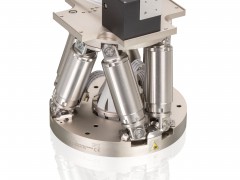 New Active Alignment System for the Coupling of Photonic Structures to Fiber Arrays
New Active Alignment System for the Coupling of Photonic Structures to Fiber Arrays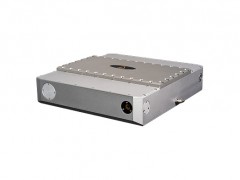 A new industrial compression module by Amplitude
A new industrial compression module by Amplitude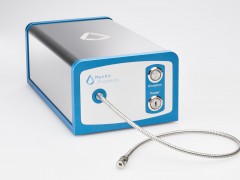 Menhir Photonics Introduces the MENHIR-1550 The Industry's First Turnkey Femtosecond Laser of
Menhir Photonics Introduces the MENHIR-1550 The Industry's First Turnkey Femtosecond Laser of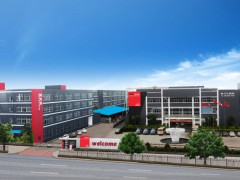 Shenzhen DNE Laser introduced new generation D-FAST cutting machine (12000 W)
more>>
Shenzhen DNE Laser introduced new generation D-FAST cutting machine (12000 W)
more>>
